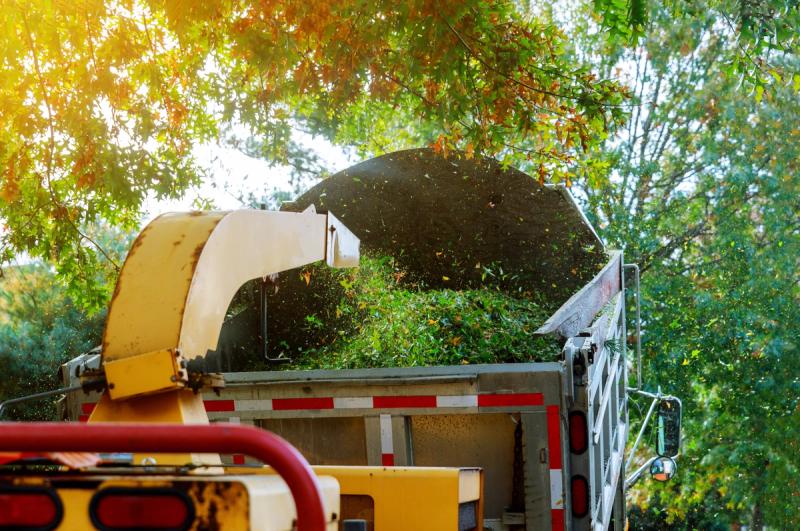Woodchipper Safety Tips for Acreage Owners


If you’re newer to country living or recently purchased acreage, you may still be adjusting to the increased responsibilities that come with keeping up a larger property. Tasks like clearing brush, trimming trees and managing landscaping debris can be a challenge. Luckily, woodchippers can turn these tasks into manageable do-it-yourself projects that let you keep your land looking the way you want.
However, using a woodchipper comes with its own set of risks and safety considerations.
Here’s what you need to know to safely choose and use a woodchipper on your property.

How to Choose Your Chipper
Not every woodchipper works the same way, and not all are geared for home or noncommercial use. Choosing the right size and model will make your work safer and more efficient.
First, the size of your chipper matters. For most homeowners, one that can handle branches up to three inches in diameter is big enough. Think about the size of branches you’ll likely want to break down before you invest in a woodchipper. Underpowered machines are more prone to jams or damage.
Since you’ll probably be working in various areas of your property, consider portability. Woodchippers are heavy, so look for one that has at least one handle and sturdy wheels so you can easily move it where you need it.
Also consider safety mechanisms. Some woodchippers self-feed and prevent users from having to manually push debris into the hopper. This is a safety feature that minimizes hand contact with the feeding area, and it’s often worth paying extra for. Likewise, every woodchipper should have safety shields, particularly around the feed chute and chip discharge area. These prevent accidental contact with moving parts and keep debris from flying out.
Most of all, look for a woodchipper that includes an emergency shutoff button. It should be easily accessible in case of jams and emergencies.

How to Use Your Chipper
After you bring your woodchipper home, your next task is learning how to safely use it. Woodchippers generally come with user manuals, and they’re typically available online, as well. Read through the instructions before you start so you understand how to operate the machinery. If you’re not comfortable with the directions or the process, don’t use your chipper. They can be dangerous, so don’t take chances.
Always wear the right safety gear. Anyone near the machinery should also gear up. Wear eye protection like safety glasses or goggles, hearing protection like earmuffs or earplugs, heavy-duty gloves to prevent splinters and hand injuries, fitted clothing that can’t get caught in the machine and closed-toed shoes (preferably steel-toed boots, if you have them).
Before turning on the chipper, clear the work area of unnecessary items such as tools, logs and branches. If you have kids and pets, make sure they’re at least 50 feet away from the machine. They may find it exciting and want to help, but woodchippers eject debris at high speeds, so keep everyone at a safe distance. Stay away from the discharge opening and aim it in a safe direction and away from people, vehicles and buildings.
Begin by feeding branches into the hopper. Stand to the side and never directly in front of the feed chute. Use a push stick or long branch to push smaller branches, twigs and leaves into the hopper so you don’t have to put your hands near the feed rollers. Most woodchipper accidents happen when people push material into the machine with their hands, so keep yours far away from moving parts.
Don’t overload the machine. Feeding too much material can cause jams, which can be dangerous for you and damage the machine. Always feed branches gradually, letting the chipper process each one before adding another. If your woodchipper becomes clogged or jammed, turn it off before clearing the debris. Never reach into a running woodchipper.
Keep your woodchipper working right by regularly checking its blades, engine and feeding mechanism for wear and tear or damage. Dull blades can increase jams and overwork the motor. Always turn off and unplug or cool down the machinery before performing maintenance or repairs.
Acreage life can get busy, but only use a woodchipper during the day when you have enough lighting to work. Never use it when you’re tired, distracted or in poor weather conditions, as those are all risk factors for accidents.
Teach kids and pets how to be safe around the woodchipper and other tools. Establish physical boundaries, never let kids operate or approach the running machine and have another adult supervise young children and pets while you’re using the woodchipper to prevent accidents.
Woodchippers are great tools for keeping your land looking its best and they can make cleanup easier, but they are potentially dangerous and require careful use and respect. By choosing the right machine for your needs and following a few easy safety tips, you’ll get the best results from your new woodchipper without risking accidents.
Tags:Tool Time

Acreage Life is part of the Catalyst Communications Network publication family.













